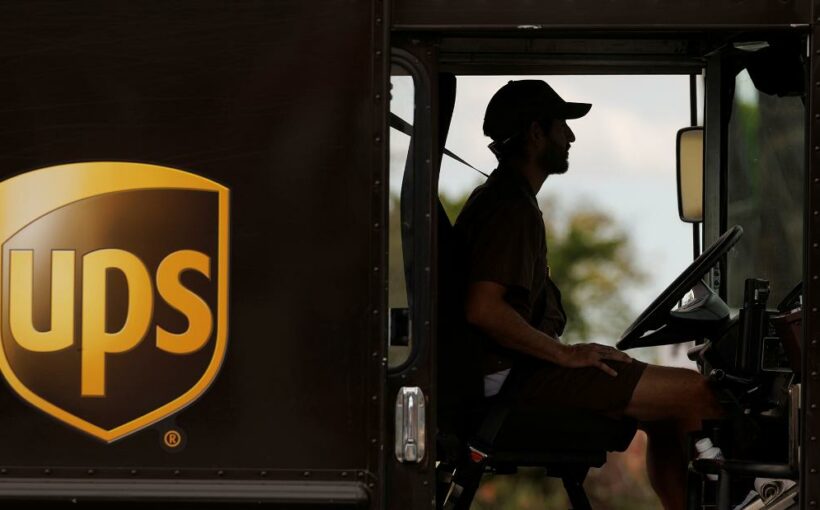New York (CNN Business)Over the past year, the nascent labor movements at mighty corporations like Starbucks and Amazon have grabbed national attention. But less well-known is a looming high-stakes clash between one of America’s oldest unions and the world’s biggest package courier.
JUST WATCHED
Starbucks employees at New York store vote to unionize (2021)
MUST WATCH
Contract negotiations are set to begin in the spring between UPS and the Teamsters Union ahead of their current contract’s expiration at the end of July, 2023. Already, before the talks have even started, labor experts are predicting that the drivers and package handlers will go on strike.
“The question is how long it will be,” said Todd Vachon, professor of Labor Relations at Rutgers. “The union’s president ran and won on taking a more militant approach. Even if they’re very close [to a deal], the rank and file will be hungry to take on the company.”
If that happens, a strike at UPS would affect nearly every household in the country. An estimated 6% of the nation’s gross domestic product is moved in UPS trucks every year. The explosive growth of online retail has made the company and its drivers more crucial than ever to the nation’s struggling supply chain. Beyond the company’s home deliveries, it also delivers many of the goods found in stores, factories and offices.
About 350,000 Teamsters work at UPS as drivers and package sorters out of a global workforce of 534,000 permanent employees. And that’s growing fast — the company has added some 72,000 Teamster-represented jobs since the start of the pandemic.
While there are competing services at FedEx (FDX), the US Postal Service and Amazon’s own delivery service, none of them have the capacity to handle more than a small fraction of the 21.5 million US packages that UPS moves daily.
“We want a contract that provides wins for our employees and that provides UPS the flexibility to stay competitive in a rapidly changing industry,” the company said in a statement this month. “UPS and the Teamsters have worked cooperatively for almost 100 years to meet the needs of UPS employees, customers, and the communities where we live and work. We believe we’ll continue to find common ground with the Teamsters and reach an agreement that’s good for everyone involved.”
The union has not gone on strike against UPS since a nearly two-week protest in 1997. If the union does go on strike, it would be the largest strike against a single business in nation’s history.
Anger over current contract
There are certainly signs of strain in relations between the company and the union — both its leadership and its rank-and-file members.
A majority of members voted against ratifying the current contract in 2018, only to see the previous Teamster leadership, led by then-President James Hoffa, put it in place because not enough of the membership participated in the ratification vote to trigger a strike.
The union’s new president, Sean O’Brien, won his office earlier this year by making the UPS contract a central focus of his campaign. He has vowed to make UPS pay Teamster members far more this time and he often talks about a $300 million strike fund the union has accumulated to pay members in case they go on strike.
“Do our members wake up every day wanting a strike. I’d say no. But are they fed up? Yes they’re fed up,” O’Brien told CNN Business last week. “Whether or not there is a strike, that’s totally up to the company. We’re going to utilize as much leverage as we can to get our members the contract they deserve.”
UPS said the average pay for its delivery drivers is $95,000 a year, with benefits such as a traditional pension plan, worth an additional $50,000 a year. UPS’ semi-tractor drivers are paid even more. That’s far higher than most wages at FedEx and Amazon, where many drivers work for small independent contractors.
The current contract expires at 12:01 am August 1. O’Brien vows the union will not grant any kind of contract extension past that deadline.
And he added that on top of improved pay and benefits, the union will demand better working conditions, including adding air conditioning in the panel trucks used for UPS deliveries which the union says poses a health risk for drivers.
“It’s not a heavy lift for the company to install air conditioning,” he said. “There’s a lot of heat stroke going on.”
Record profits at UPS
The company often speaks about how much it values its Teamster-represented workforce.
And in one important way — employment numbers — UPS is one of the best friends labor has in the ranks of US corporate management, despite the obvious tensions. UPS is one of the few unionized employers that is significantly adding payrolls, and to union membership. At other businesses, union membership numbers have been steadily declining or decades.
The increase in Teamsters jobs at UPS has come from the steady growth in online purchases, especially during the pandemic-era surge. Last year, it took only nine months to report what was already a record profit for a full year. UPS ended 2021 with operating income up 50% to $13.1 billion. In the first half of this year, earnings rose another 10% compared with a year ago.
“Everyone keeps getting richer except for our members,” said O’Brien.
UPS CEO Carol Tome, who started that job just as the pandemic began, says that the company’s union contract is a competitive advantage at a time of worker shortages.
She also is trying to assure both investors and UPS customers that the company will be prepared in case the union does go on strike. She declined to comment on what those preparations are.
“Our goal with the Teamsters is win-win-win,” she told investors in July. But she added that UPS is “building contingency plans.”
Source: Read Full Article


